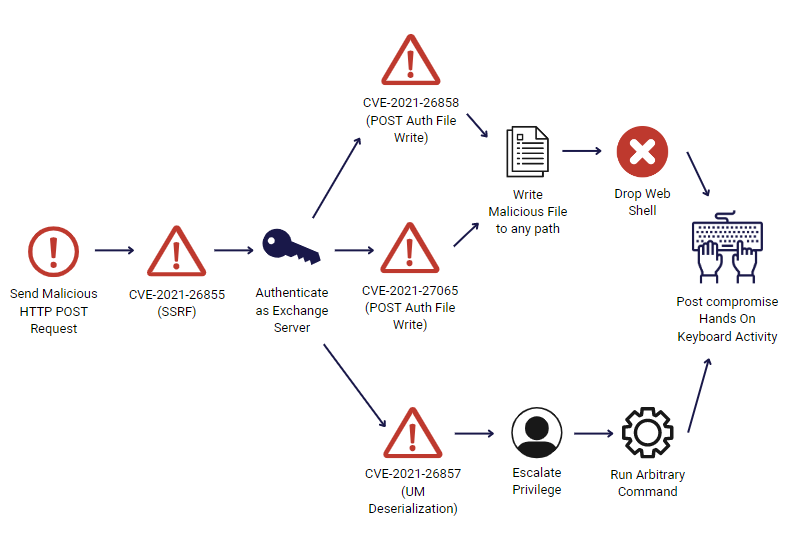Critical Vulnerability in On-Premises Exchange Servers: Microsoft Urges Admins to Patch Now
Microsoft has recently urged administrators to install the latest Cumulative Update (CU) and Security Updates (SU) on their on-premises Exchange servers to secure against potential cyber threats.

Microsoft Urges Admins to Patch On-Premises Exchange Servers Now
Microsoft has recently urged administrators to install the latest Cumulative Update (CU) and Security Updates (SU) on their on-premise Exchange servers to secure against potential cyber threats. Exchange servers play a crucial role in managing and storing corporate email communication, making them a prime target for cyber-attacks. With the rise of sophisticated cyber threats, organizations must take proactive steps to secure their Exchange servers.
Understanding the Risks to Exchange Servers
Exchange servers are vulnerable to a wide range of cyber threats, such as malware, phishing, and ransomware attacks. These attacks can result in confidential data loss, business operations disruption, and costly downtime. On March 2021, the Dutch Institute for Vulnerability Disclosure (DIVD) reported that 46,000 servers remained unpatched against the ProxyLogon bugs one week after Microsoft released security updates.

The ProxyLogon Vulnerability
The ProxyLogon vulnerability is a critical security flaw in Microsoft Exchange Server that enables unauthorized access to the server. The vulnerability is caused by a weakness in how Microsoft Exchange Server handles authentication requests, which attackers can exploit to gain complete control of the server. The following versions of Exchange Server are vulnerable to this potential threat:
- Exchange Server 2019 < 15.02.0792.010
- Exchange Server 2019 < 15.02.0721.013
- Exchange Server 2016 < 15.01.2106.013
- Exchange Server 2013 < 15.00.1497.012
This vulnerability is particularly concerning as it can be easily exploited by unskilled attackers with limited technical knowledge. In addition, the vulnerability allows attackers to remotely execute arbitrary code on an affected Exchange Server without authentication or authorization. This means attackers can easily compromise the Exchange Server, steal sensitive information, and spread malware without detection.

Associated Risks to Consider
- Having gained access to the Exchange Server, the attacker now has access to sensitive information stored in emails and can potentially use this information for malicious purposes.
- Remote access to an Exchange Server can give an attacker a foothold in the organization's network. From there, they can move laterally to gain access to other systems and data. This is particularly dangerous if the Exchange Server has elevated privilege, which can be used to carry out more sophisticated attacks.
- Additionally, the attacker could use the Exchange Server to launch targeted (spear-) phishing campaigns against the organization's clients.
Best Practices for Exchange Server Security
To protect Exchange servers from potential cyber threats, it's crucial to implement the following best practices:
- Regular Software Updates: Keep all software, including the Exchange server, up-to-date with the latest patches and security fixes.
- Access Control: Implement strict access controls to prevent unauthorized access to Exchange servers and limit the risk of data breaches. This includes monitoring user access, implementing strong passwords, and using two-factor authentication.
- Data Backup: Regularly back up your Exchange server data to minimize the impact of data loss or corruption in the event of a cyber-attack.
- Email Filtering: Implement email filtering and anti-spam solutions to protect against phishing and malware attacks.
- Network Segmentation: Segment your network to reduce the risk of a cyber-attack spreading across your entire network.
- Regular Audits: Conduct security audits to identify potential vulnerabilities and ensure that best practices are followed.

The Benefits of Proactive Security Measures for Exchange Servers
Implementing proactive security measures for Exchange servers can have a significant impact on the security of your organization. By reducing the risk of a cyber-attack, you can minimize the impact of data breaches and protect your business from costly downtime. Additionally, by ensuring your Exchange servers are secure, you can protect your confidential information, maintain business operations, and demonstrate a commitment to data security to your customers and stakeholders.
Summary
In conclusion, Exchange servers play a critical role in corporate communication, making them a prime target for cyber attackers. To protect against the growing threat of cyber-attacks, it is essential that Exchange Server administrators take proactive steps to secure their systems. By following the best practices outlined above, you can ensure the safety and security of your Exchange server and the sensitive information it contains.
References
- The Exchange Team. (2023, January 31). Protect Your Exchange Servers. techcommunity.microsoft.com. Retrieved February 2, 2023, from https://techcommunity.microsoft.com/t5/exchange-team-blog/protect-your-exchange-servers/ba-p/3726001
- Oudshoorn, L. (2023, January 24). Exchange Zero-day detection script. DIVD CSIRT. Retrieved February 2, 2023, from https://csirt.divd.nl/2021/03/08/Exchange-vulnerabilities-update/
- Kanishka10. (2022, August 27). ProxyLogon vulnerability : Explained In detail. Hackercool Magazine. Retrieved February 2, 2023, from https://www.hackercoolmagazine.com/proxylogon-vulnerability-explained-in-detail/
- Gatlan, S. (2023, January 27). Microsoft urges admins to patch on-premises Exchange servers. BleepingComputer. Retrieved February 2, 2023, from https://www.bleepingcomputer.com/news/security/microsoft-urges-admins-to-patch-on-premises-exchange-servers/





